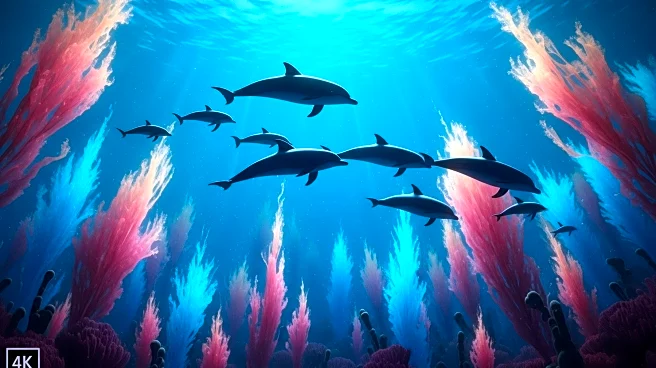What is the story about?
What's Happening?
A team of researchers from Florida to Wyoming has discovered a potential link between Alzheimer's-like symptoms in dolphins and exposure to toxins produced by cyanobacteria. These microscopic organisms thrive in warm, nutrient-rich waters and release harmful compounds such as β-N-methylamino-L-alanine (BMAA), which can accumulate in the food chain and affect top predators like dolphins. Studies have shown that these toxins can lead to brain damage and cognitive decline similar to Alzheimer's disease. The research involved examining the brains of stranded bottlenose dolphins in Florida's Indian River Lagoon, where significant levels of BMAA and related toxins were found, especially during peak cyanobacterial bloom periods.
Why It's Important?
The findings are significant as they suggest that dolphins, often considered environmental sentinels, may be indicators of toxic exposures in marine environments that could also affect human health. The prevalence of Alzheimer's disease in areas like Miami Dade County, which has the highest rates in the U.S., raises concerns about the impact of cyanobacterial blooms on human populations. The research highlights the potential risk factors associated with cyanobacterial exposure, which may contribute to neurological diseases in humans, similar to observations made among Guam villagers.
What's Next?
The duration and frequency of cyanobacterial blooms are increasing due to climate change and nutrient inputs from agricultural runoff and sewage discharges. This trend suggests that the risk of exposure to these harmful toxins may continue to rise, potentially affecting more marine life and human populations. Researchers and environmental agencies may need to focus on mitigating these blooms and monitoring their impact on both marine ecosystems and public health.
Beyond the Headlines
The study underscores the broader implications of environmental changes and pollution on marine life and human health. It raises ethical and ecological concerns about the management of water resources and the need for sustainable practices to prevent harmful algal blooms. The research also opens up discussions on the long-term effects of climate change on biodiversity and the interconnectedness of ecosystems.
AI Generated Content
Do you find this article useful?
















